The strength of the bales and the way in which they are strapped or wrapped is also relevant to handling. Some bales, e.g. those consisting of combed top, are very sensitive and require particularly careful operating procedures.
Purely manual stowage is impossible because the individual bales are so heavy. An exception could be made if hard-top open-top containers are used, since these allow the bales to be directly set down using lifting gear with wool hooks or similar load suspension devices, individual bales then having merely to be straightened. Manual stacking is out of the question.
As a rule, standard box containers are used. The stowage factors mean that really only 20' containers can be used - 40' containers could only be used for relatively loosely compressed bales of light materials.
Bales requiring stowage consist in particular of sheep's wool, cotton and tobacco of widely varying origin, combed top, textiles, cellulose, paper, aluminum residues, waste paper etc. Many natural fibers, such as sisal etc, which used to be transported (carried) in bales, are now more and more frequently shipped in further-processed forms, such as "hanks", reels etc. Natural rubber, empty bags (gunnies) and similar products are still transported in bales, however.
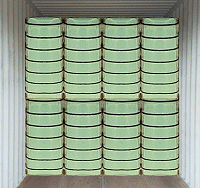 |
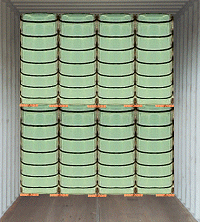 |
| Bales, standing lengthwise, without dunnage |
Bales, standing lengthwise, with dunnage |
The bales are packed standing, with their narrow, rounded sides in the lengthwise direction. Wooden dunnage is not required if the bales are handled with bale clamps. The advantage is that no additional moisture is introduced into the container and sensitive bales do not suffer pressure damage.
If wooden dunnage is laid, it should be kiln dry or at least dry. If the moisture content is not known, the lumber should be covered with strips of material which can neither damage the bales nor allow moisture to pass through. In the example, the lumber is laid in such a way that the bales can be picked up in pairs by the forklift truck. To simplify packing and stripping operations, the bales can be tied together in pairs with binder twine. If there is a risk of pressure damage, wooden dunnage must not be laid or it must be laid sufficient densely to prevent pressure damage while still leaving sufficient gaps for forks to pass between it.
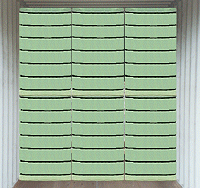 |
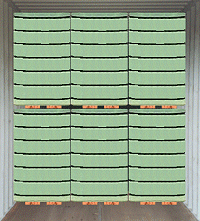 |
| Bales, standing crosswise, without dunnage |
Bales, standing crosswise, with dunnage |
Here the bales were packed standing, but with their rounded sides in the transverse direction. The wooden dunnage was laid in such a way that the bales can be picked up individually and the forks can be positioned close to the bale edges.
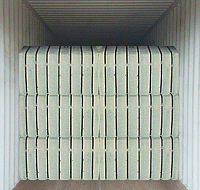 |
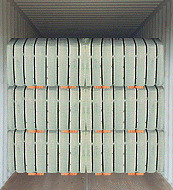 |
| 3 layers of bales lying horizontally, without dunnage |
3 layers of bales lying horizontally, with dunnage |
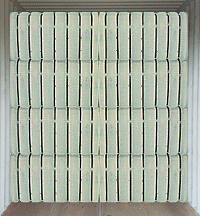 |
 |
| 4 layers of bales lying horizontally, without dunnage |
4 layers of bales lying horizontally, with dunnage |
 |
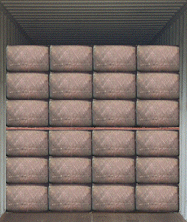 |
| Large tobacco bales, without dunnage |
Small tobacco bales with interlayer dunnage |
Tobacco bales are very sensitive to pressure damage and must be stowed flat. Special measures with regard to air circulation etc. are described under Basic stowage methods.
 |
Bales in a 20' container (plan view) |
Because the bales are so dimensioned that they occupy the full width of the container, the gap at the front end wall of the container is filled with a wooden lattice. A lattice of similar construction, but with additional squared lumber, is positioned on the door side.
| Bales in a 20' container (side view from right) |
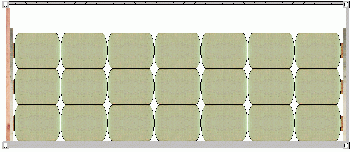 |
The smooth tops of the bales point towards the outer walls of the container. If contact with the container walls was likely to cause degradation in quality, appropriate measures would have to be taken.
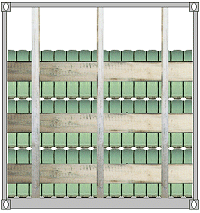 |
The horizontal boards of the lattice should be positioned in such a way that the bales are held exactly centrally, and their width should be such that on the one hand there is no risk of pressure damage and on the other hand they retain sufficient strength. The squared lumber uprights may be braced against the door frame. This may be achieved by gentle bracing or by using tapered blocks. |
| Bales in a 20' container (view from door end) |